East Flowing Rivers in India
- Rivers have been of fundamental importance throughout human history. Water from rivers is a basic natural resource, essential for various human activities.
- Therefore, riverbanks have attracted settlers from ancient times. Using rivers for irrigation, navigation, and hydropower generation is of special significance — particularly to a country like India, where agriculture is the major source of livelihood of the majority of its population.
- The major east-flowing rivers are the Godavari, Krishna, Cauvery, Mahanadi, Pennar, Subarnarekha, Brahamani, Ponnaiyar, Vaigai River, etc.
- East flowing rivers:
- flow into the Bay of Bengal
- have many tributaries
- forms Deltas
- carry larger sediments than West flowing rivers.
Pennar River
- The Pennar (also known as Uttara Pinakini) is one of the major rivers of the peninsula.
- The Pennar rises in the Chennakasava hill of the Nandidurg range, in Chikkaballapura district of Karnataka, and flows towards the east eventually draining into the Bay of Bengal.
- The total length of the river from origin to its outfall in the Bay of Bengal is 597 km.
- Located in peninsular India, the Pennar basin extends over states of Andhra Pradesh and Karnataka having an area of ~55 thousand Sq.km
- The fan-shaped basin is bounded by the Erramala range on the north, by the Nallamala and Velikonda ranges of the Eastern Ghats on the east, by the Nandidurg hills on the south, and by the narrow ridge separating it from the Vedavati valley of the Krishna Basin on the west.
- The other hill ranges in the basin to the south of the river are the Seshachalam (famous for Red Sanders) and Paliconda ranges.
- The major part of the basin is covered with agriculture accounting to 58.64% of the total area.
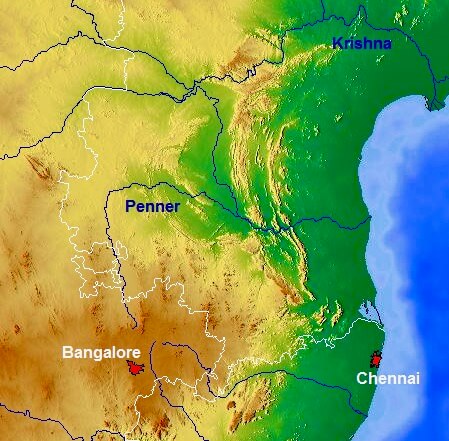
Tributaries of Pennar River
- Left Bank: the Jayamangali, the Kunderu and the
- Right bank: the Chiravati, the Papagni, etc.
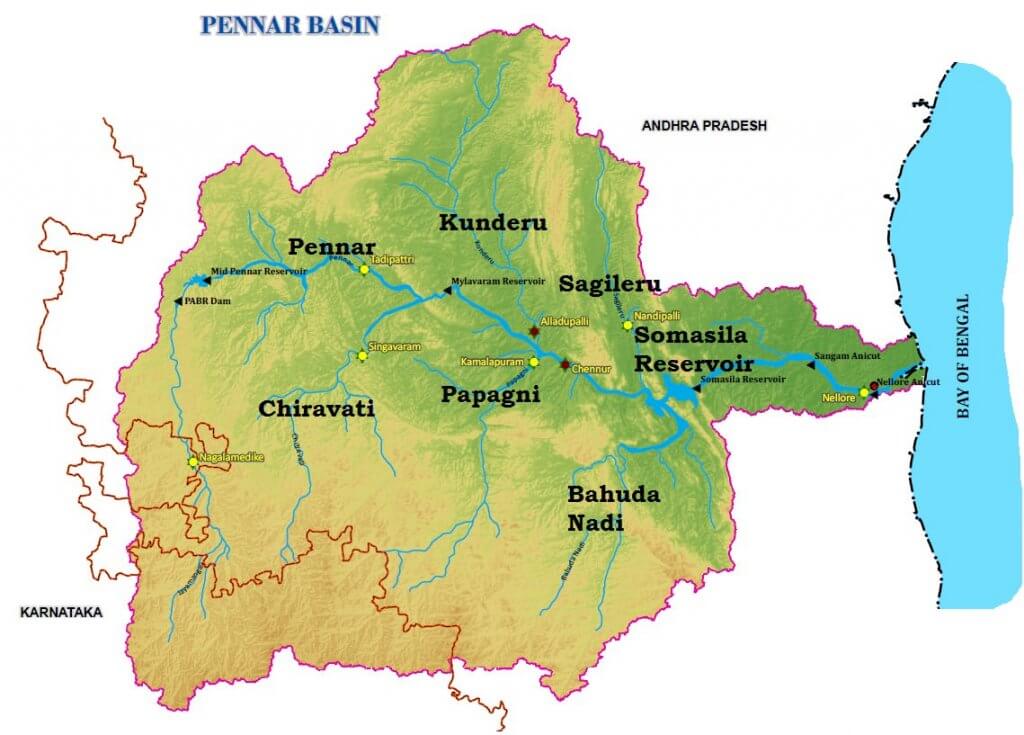
Projects on Pennar River
- Tungabhadra high-level canal in Krishna basin irrigated areas in Pennar basin also. The major project in the basin is the Somasila project, Mylavaram Dam, Penna Ahobilam Balancing Reservoir (PABR Dam).
Palar River
- Palar is a river of southern India. It rises in the Nandi Hills in Chikkaballapura district of Karnataka state and flows in Karnataka, Andhra Pradesh, and Tamil Nadu before reaching its confluence into the Bay of Bengal at Vayalur.
- The Cheyyar and the Ponnai in Tamil Nadu are the major tributaries of this river Palar.
- Palar river water from Palar anicut is diverted to the Poondi reservoir located in the Kosasthalaiyar River basin and to Chembarambakkam Lake located in the Adayar River basin.
Subarnarekha River
- The Subarnarekha originates from the Ranchi Plateau in Jharkhand forming the boundary between West Bengal and Odisha in its lower course.
- It joins the Bay of Bengal forming an estuary between the Ganga and Mahanadi deltas. Its total length is 395 km.
Tributaries of Subarnarekha River
- Left bank: Dulang River
- Right bank: Kanchi River, Kharkai, Karkari River, Raru River, Garru River
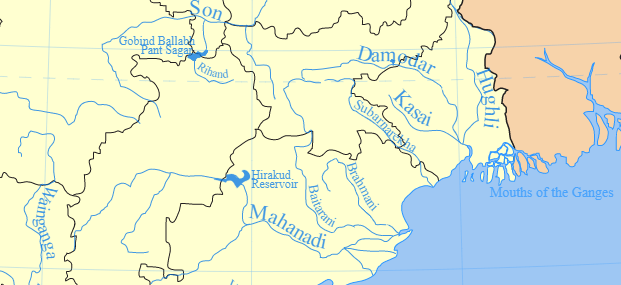
Hundru Falls
- Hundru Falls is created on the course of the Subarnarekha, where it falls from a height of 98 metres (322 ft).
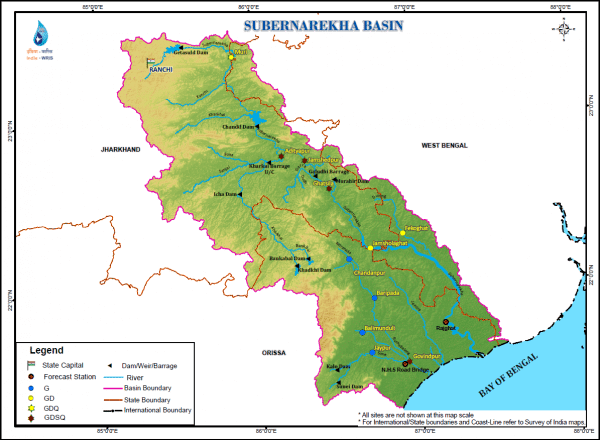
Brahamani River
- The Brahmani river comes into existence by the confluence of the Koel and the Sankh rivers near Rourkela. It has a total length of 800 km.
- The basin is bounded in the North by the Chhotanagpur plateau, in the West and South by the Mahanadi basin, and in the East by the Bay of Bengal.
- The basin flows through Jharkhand, Chhattisgarh, and the Orissa States and drains into the Bay of Bengal.
- Together with the river Baitarani, it forms a large delta before emptying into the Bay of Bengal at Dhamra.
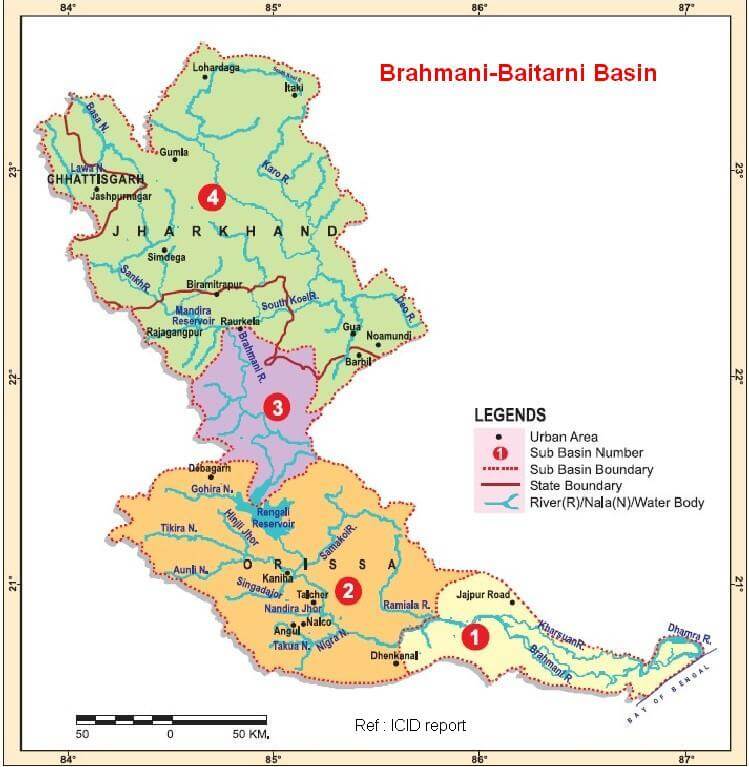
Rengali Dam
- Rengali dam is a dam located in Odisha, India. It is constructed across the Brahmani River in Rengali village, located 70 km from Angul in Angul district.
Baitarni River
- The Baitarani River is one of the major rivers of Orissa.
- The basin lies mostly in the State of Orissa excluding 736 km2 in Singhbhum District of Jharkhand State.
- The Baitarani River originates from Guptaganga hills in Keonjhar District of Orissa.
- Initially the river flows in northern direction for about 80 km and then takes a sudden right turn. In this reach, the river serves as a boundary between Jharkhand and Orissa states up to the confluence of Kangira River.
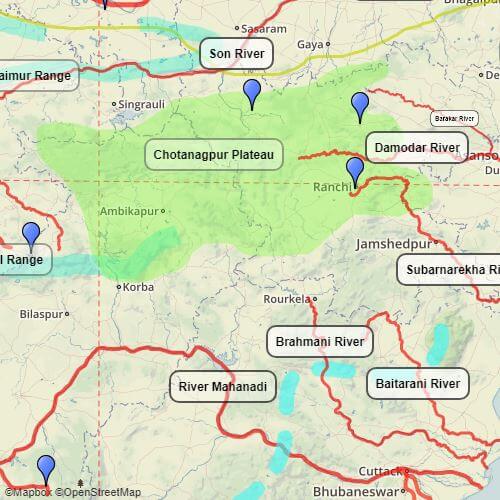
Damodar Rive
- The Damodar River rises in the Palamau hills of Chota Nagpur at an elevation of about 609.75 m and flows through a rift valley.
- It flows in a south-easterly direction entering the deltaic plains below Raniganj. Near Burdwan, the river abruptly changes its course to a southerly direction and joins Hooghly about 48.27 km below Calcutta.
- It has a number of tributaries and subtributaries, such as Barakar, Konar, Bokaro, Haharo, Jamunia, Ghari, Guaia, Khadia and Bhera.
- The biggest tributary of the Damodar River is the Barakar. The source of Barakar is located in the vicinity of the Padma in the Hazaribagh district.
- Earlier known as the Sorrow of Bengal because of its ravaging floods in the plains of West Bengal.
- At present, the Damodar is the most contaminated river in India, due to the various industries that have mushroomed on its riverbanks, which are good resources of minerals. There are a number of coal-oriented industries that are scattered over the Damodar basin.
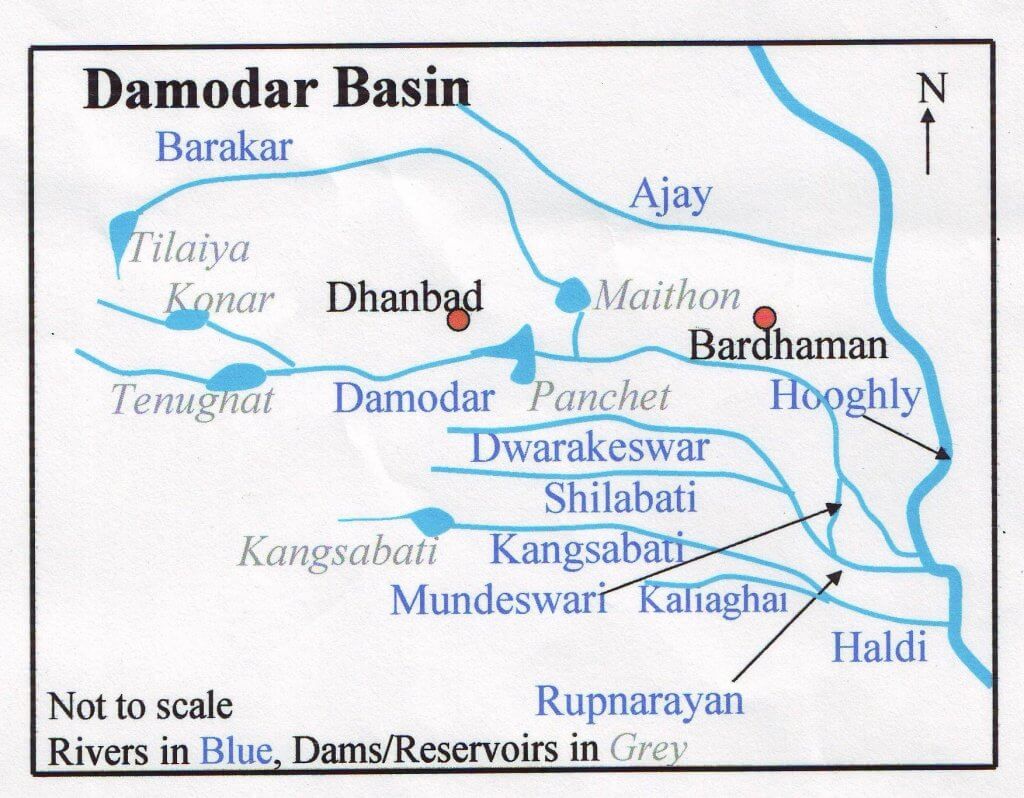
Ponnaiyar River
- The South Pennar River is known as Dakshina Pinakini in Kannada and Thenpennai in Tamil. It is also referred as Ponnaiyar.
- The river originates in the Nandi Hills in the Chikkaballapura district of Karnataka and flows through Tamil Nadu before emptying into the Bay of Bengal.
- It covers a small area in the state of Tamil Nadu, Karnataka, and Andhra Pradesh.
- The Basin is bounded on the North -West, and South by various ranges of the Eastern Ghats like the Velikonda Range, the Nagari hills, the Javadu hills, the Shevaroy hills, the Chitteri hills, and the Kalrayan hills, and in the East by the Bay of Bengal.
- The Krishnagiri dam and Sathanur Dam are also built across this river. Moongilthuraipattu Sugar Factory is situated on the bank of the river.
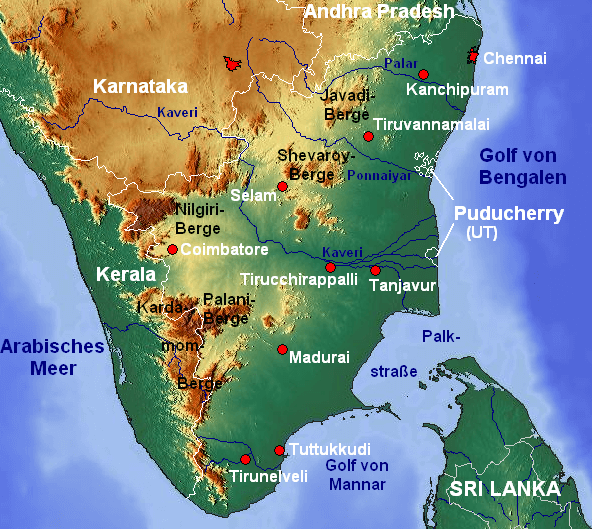
Vaigai River
- The Vaigai is a river in the Tamil Nadu state of southern India.
- It originates in Varusanadu Hills, the Periyar Plateau of the Western Ghats range, and flows northeast through the Kambam Valley, which lies between the Palani Hills to the north and the Varushanad Hills to the south.
- The Vattaparai Falls are located on this river.
- The river empties into the Palk Strait near Uchipuli, close to the Pamban bridge in Ramanathapuram District.
- Its main tributaries are Suruliyaru, Mullaiyaru, Varahanadhi, Manjalaru, Kottagudi, Kridhumaal and Upparu.
- The Suruliyar and the Manjalar, the two important left-bank tributaries together account for nearly 20 percent of the total catchment area of the Vaigai.
- The Suruliyar, the principal tributary of the Vaigai also rises in the Eastern slopes of the Varushanadu hills and flows in the North and North-Easterly direction.
- The Manjalar another major tributary rises in the Palani hills and flows generally in the Easterly direction before joining the Vaigai below the Vaigai dam.
- The Vaigai also receives another minor tributary namely, the Varahanadhi (Varaha River) on its left bank below the Vaigai dam.
- The Suruliyar and the Manjalar, the two important left-bank tributaries together account for nearly 20 percent of the total catchment area of the Vaigai.
- The Vaigai was the river that flowed through the noted city of Madurai, the capital (4th-11th century CE) of the ancient and prosperous Pandya kingdom located in southern Tamil Nadu.
- The river finds a mention in Sangam literature dated to 300 before the Common Era.
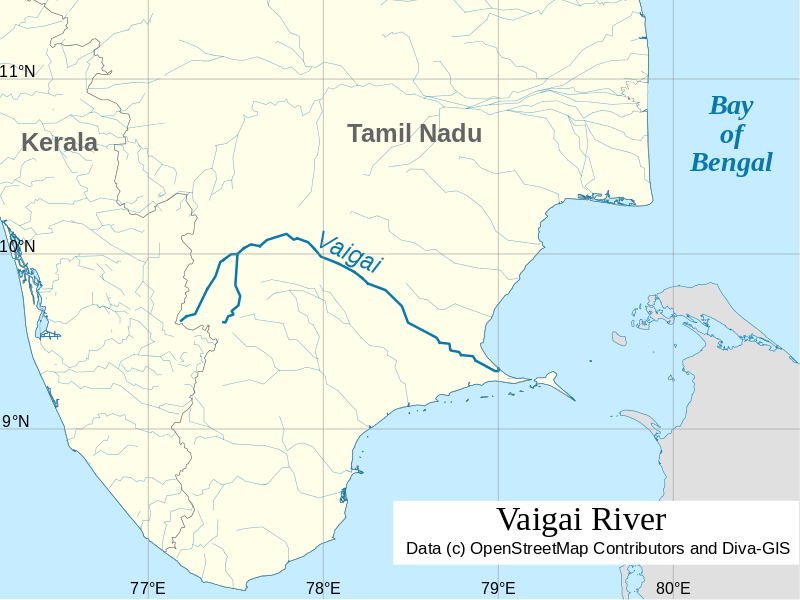


Use ful content